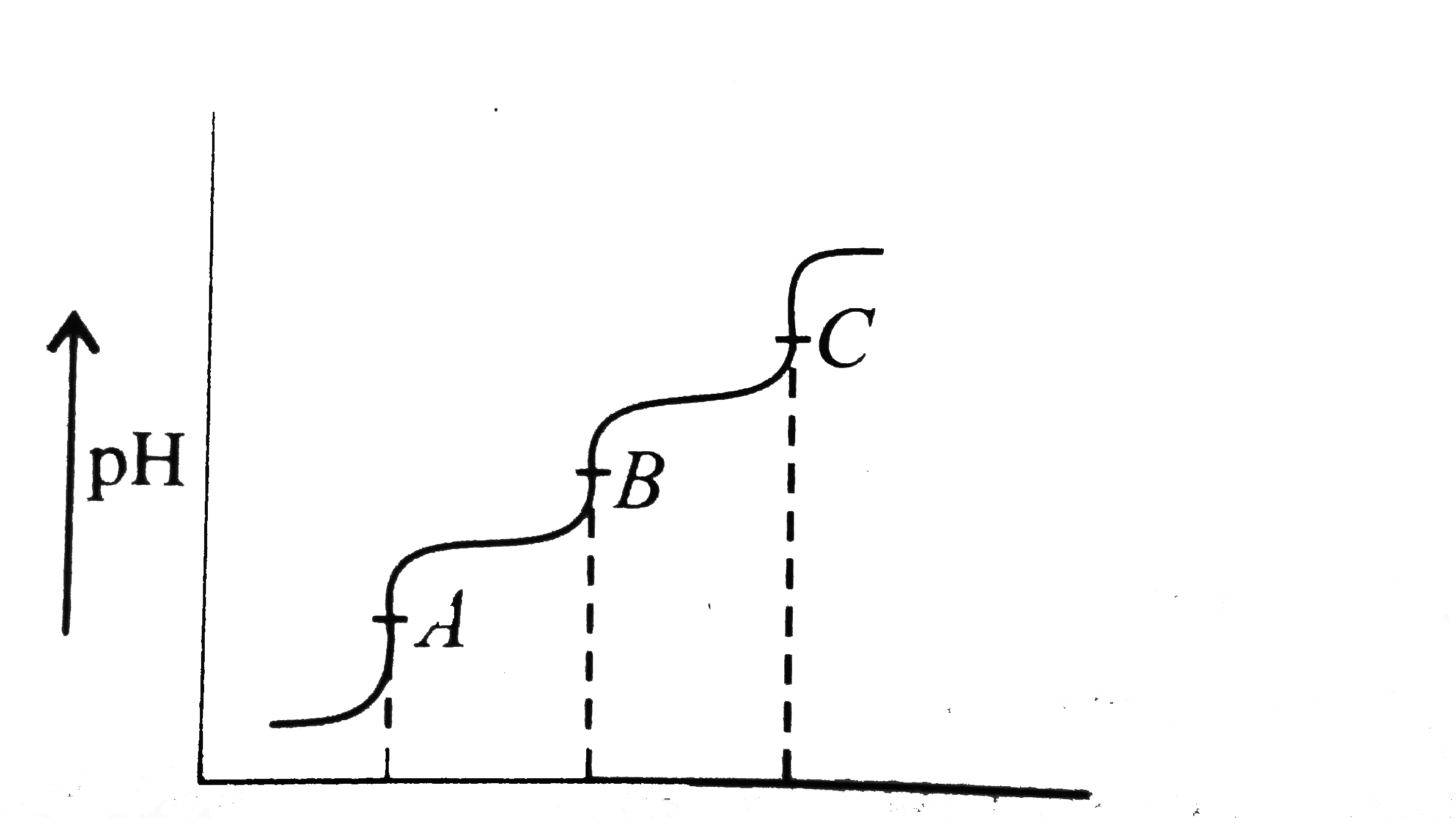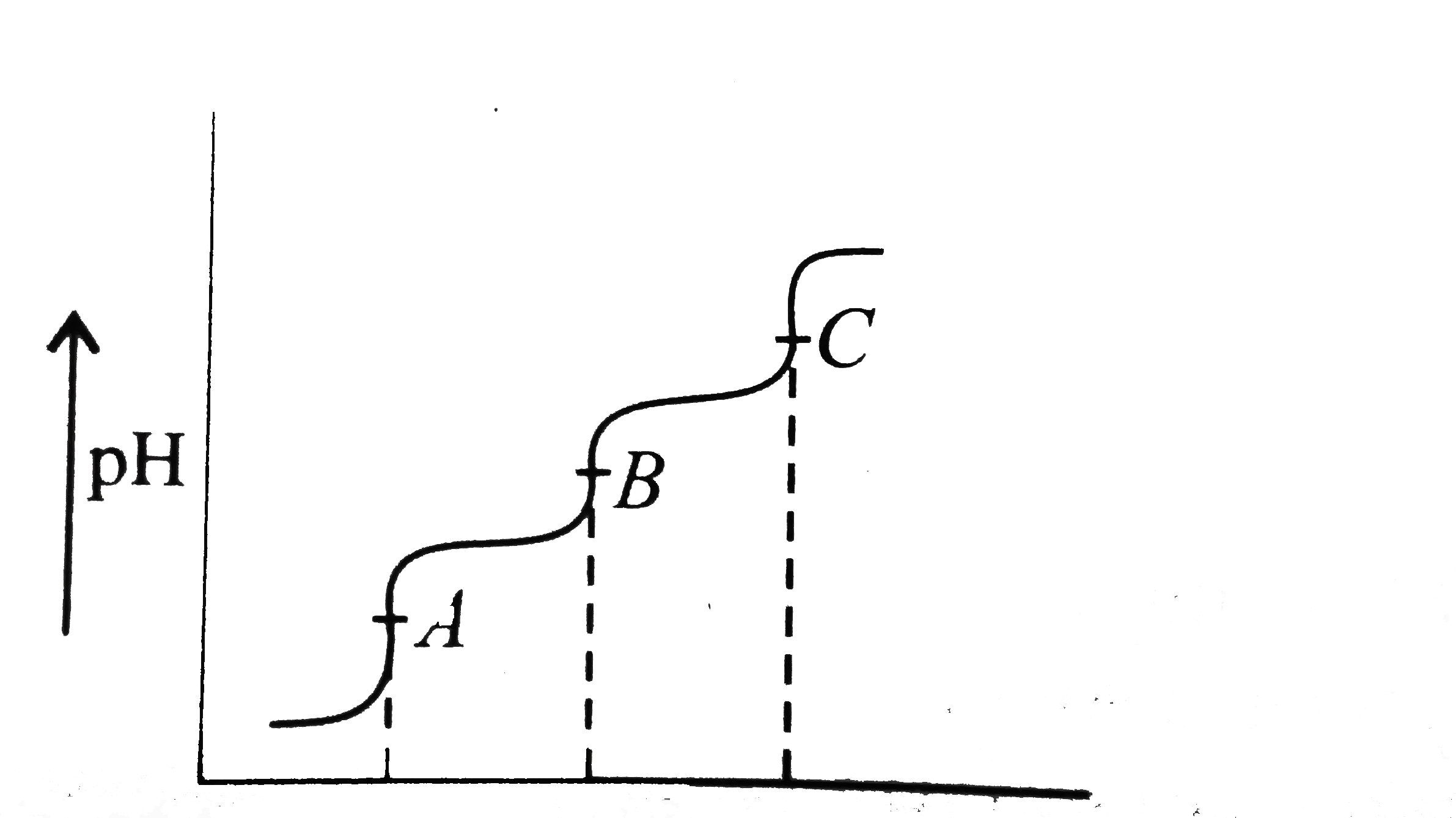H∈ is an acidic indicator (KInd=10−7) which dissociates into aqueous acidic solution of 30mL of 0.05MH3PO4(K1=10−3,K2=10−7,K3=10−13)
If this solution is treated with 30mLof NaOH solution, then what molarity of NaOH is needed to reach the equivalence point with indicator?
0.1M
0.2M
0.3M
0.4M
The correct Answer is:A
At 1st neutralisation point, H3PO4 is converted to KH2PO4, here pH of the solution
pK1+pK22=3+72=5.
At 2nd neutralisation point, H3PO4 is converted to KH2PO4,
∴pH=pK2+pK32=7+132=10
The equivalence point will be obtained when acid H3PO4 will change into K2HPO4.
('n' factor for acid =2) (2H⊕ ions are replaced)
mEqofH3PO4=mEq of NaOH
0.05×30×2=30×M
MNaOH=0.1M
Topper's Solved these Questions
- IONIC EQUILIBRIUMBook:CENGAGE CHEMISTRYChapter:IONIC EQUILIBRIUMExercise:Exercises Multiple Correct
Explore 33 Videos
- IONIC EQUILIBRIUMBook:CENGAGE CHEMISTRYChapter:IONIC EQUILIBRIUMExercise:Exercises Single Correct
Explore 121 Videos
- IONIC EQUILIBRIUMBook:CENGAGE CHEMISTRYChapter:IONIC EQUILIBRIUMExercise:Exercises Subjective(Coordination Equilibria)
Explore 2 Videos
- HYDROGEN, WATER AND HYDROGEN PEROXIDEBook:CENGAGE CHEMISTRYChapter:HYDROGEN, WATER AND HYDROGEN PEROXIDEExercise:Subjective Archive (Subjective)
Explore 3 Videos
- ISOMERISMBook:CENGAGE CHEMISTRYChapter:ISOMERISMExercise:Assertion-Reasoning Type
Explore 1 Video
Similar Questions
Knowledge Check
H∈ is an acidic indicator (KInd=10−7) which dissociates into aqueous acidic solution of 30mL of 0.05MH3PO4(K1=10−3,K2=10−7,K3=10−13)
Calculate the [IndΘH∈]A1.413×10−5B1.413×10−4C3.128×10−5D3.128×10−14H∈ is an acidic indicator (KInd=10−7) which dissociates into aqueous acidic solution of 30mL of 0.05MH3PO4(K1=10−3,K2=10−7,K3=10−13)
If H∈ and IndΘ posses colour P and Q, respectively, and concentration of HIn is 120 times than that of IndΘ. colour Q predominates over P when concnetration of IndΘ is 127 times of HIn.
What is the pH range of the indicator.A4.896→9.0792B4.896→8.0792C4.896→7.0792D4.896→6.0792Hydrocyanic acid (Ka=4.8×10−10) is dissociated to an extent of .... In 1.0 M solution . F
A0.0022%B0.022%C0.0048%DNone of these
Calculate the pH and concentration of all
species present at equilibrium in 0.1 M H3PO4 solution.
Ka1=7.5×10−3,Ka2=6.2×10−8,Ka3=4.2×10−13
View Solution10 mL of 0.2 M HA is titrated with 0.2 M NaOH solution. Calculate change in pH between 50% of equivalence point to equivalence point.
[Ka of HA =10−5]
View SolutionAcidic solution is defined as a solution whose [H⊕]>[ΘOH]. Base solution has [ΘOH]>[H⊕]. During acid-base titrations, pH of the mixture will change depending on the amount base added. This variation is shown in the form of graph by making plot as titration curves 100mL of 1.0MH3A(Ka1=10−3,Ka2=10−5,Ka3=10−7) is titrated against 0.1MNaOh. The titration curve is as follows.

What would be the pH is more of NaH2A is added to the titration mixture at point C ?
View SolutionA 50.0 mL sample of a 1.00 M solution of a diprotic acid H2A(Ka1=1.0×10−6 and Ka2=1.0×10−10) is titrated with 2.00 M NaOH. What is the minimum volume of 2.00 M NaOH needed to reach a pH of 10.00 ?
View SolutionAcidic solution is defined as a solution whose [H⊕]>[ΘOH]. Base solution has [ΘOH]>[H⊕]. During acid-base titrations, pH of the mixture will change depending on the amount base added. This variation is shown in the form of graph by making plot as titration curves 100mL of 1.0MH3A(Ka1=10−3,Ka2=10−5,Ka3=10−7) is titrated against 0.1MNaOh. The titration curve is as follows.

What will be the change in pH from point B to point C?
View Solution

